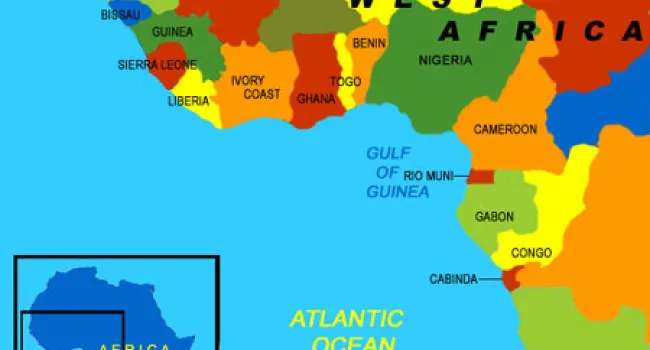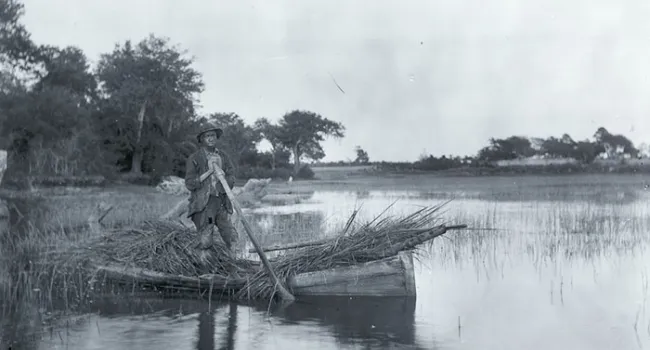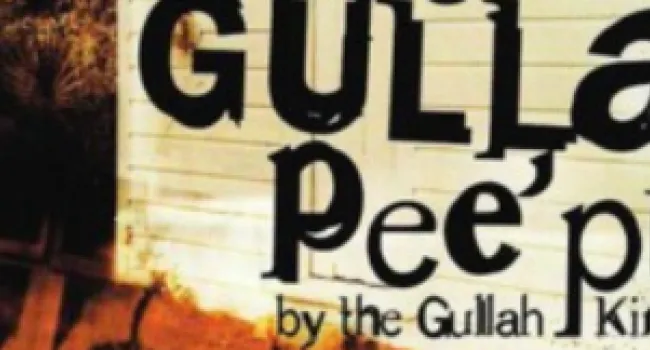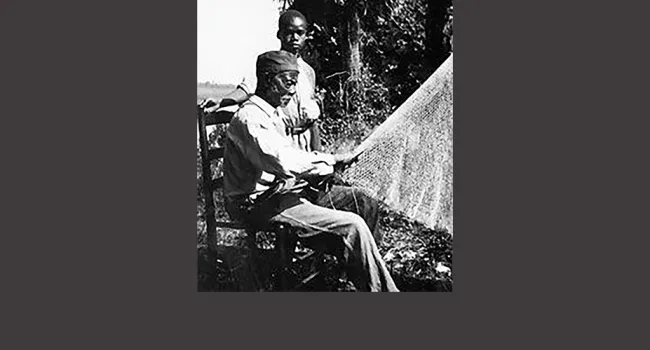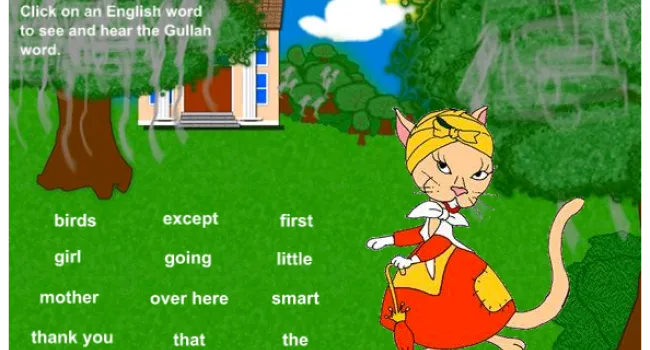Native Islanders share their folklore and history through storytelling and singing. Gullah storytellers often perform folktales that feature animals as the main characters. Much like tales heard in Africa, the smaller animals often outsmart the bigger ones. A good example is the trickster named Brer Rabbit. He is a direct descendant of Cunnie Rabbit, the clever character in African folklore. Pictured above: South Carolinian Anita Singleton-Prather keeps the storytelling tradition alive on this side of the Atlantic Ocean.
Storytellers in West Africa have always been respected members of their communities. Today, Gullah storytellers like Anita Singleton-Prather carry on this tradition of acting out characters by changing their voice and making animated facial expressions. During a live performance, one storytelling technique is to get the audience involved by asking them to repeat words.
WORD BANK
Native Islander (na.tive is.land.er) n. - one of the original inhabitants or lifelong residents of the Sea Islands.
folklore (folk.lore) n. - the traditional stories, sayings and culture of a group of people.
storytelling (sto.ry.tell.ing) n. - the art of telling or writing stories, usually of historical or cultural value.
Gullah (gul.lah) n. - one of a group of people of African ancestry that live in the Sea Islands and coastal areas of South Carolina, Georgia, and northern Florida; the creolized language of the Gullahs, based on English and several other African languages and spoken in Sea Island communities.
trickster (trick.ster) n. - a figure in myth or folklore, often an animal, that deceives people as a joke or form of entertainment.
descendant (de.scen.dant) n. - a person whose ancestry can be traced to a particular person or group.
West Africa (west af.ri.ca) - the region of western Africa between the Sahara Desert and the Gulf of Guinea.
Standards
- K.2 Utilize the college and career skills of a geographer to apply map skills and draw conclusions about place in one’s personal community.
- ELA.AOR.1 Evaluate and critique key literary elements that enhance and deepen meaning within and across texts.
- 1.H.1 Identify similarities and differences between one’s community and other South Carolina communities over time.
- ELA.AOR.1 Evaluate and critique key literary elements that enhance and deepen meaning within and across texts.
- 2.CG.1 Identify cultural and ethnic groups in the U. S., explore their characteristics, and communicate how civic dispositions build relationships between groups in a diverse society.
- ELA.AOR.1 Evaluate and critique key literary elements that enhance and deepen meaning within and across texts.
- 3.4.1.PR Investigate the cultural characteristics of places and regions around the world.
- ELA.AOR.1 Evaluate and critique key literary elements that enhance and deepen meaning within and across texts.
- 4.1.CX Contextualize the experience of Africans, Europeans, and Native Americans in South Carolina.
- ELA.AOR.1 Evaluate and critique key literary elements that enhance and deepen meaning within and across texts.
Resources
You need to be logged in to listen to view this content. Create an account now; it's quick, easy, and free!
Log In to ViewLos Nativos de las Islas comparten su historia folclórica a través de la narración y el canto. Los narradores de Gullah a menudo realizan cuentos folclóricos que muestran a los animales como los personajes principales. Al igual que los cuentos que se escuchan en África, los animales más pequeños a menudo superan a los más grandes. Un buen ejemplo es el embaucador folclórico llamado Brer Rabbit. Es descendiente directo de Cunnie Rabbit, el personaje inteligente del folklore Africano. En la foto de arriba: Anita Singleton-Prather, Carolina del Sur, mantiene viva la tradición de contar historias en este lado del Océano Atlántico.
Los narradores de África Occidental siempre han sido miembros respetados de sus comunidades. Hoy en día, los narradores de Gullah como Anita Singleton-Prather, llevan a cabo esta tradición de actuar a los personajes cambiando su voz y haciendo expresiones faciales animadas. Durante una actuación en vivo, una técnica de narración de cuentos es conseguir que la audiencia participe pidiéndoles a ellos que repitan palabras.


